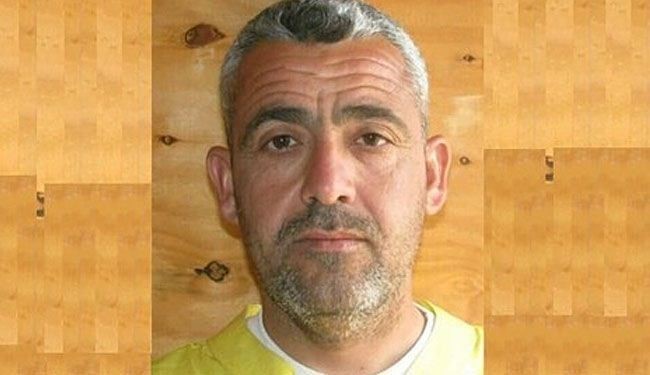
A US Air Force fighter takes off. (Krystal Ardrey/US Air Force via AP)
The US Army achieved a significant victory in its war on ISIS last week when it killed Fadhil Ahmad al-Hayali, senior deputy to ISIS leader Abu Bakr al-Baghdadi.
The second in command of the Islamic State (ISIS) terror group was reportedly killed in a US military airstrike in Iraq earlier this week, the White House announced on Friday.
Ned Price, a spokesman for the White House National Security Council, said Fadhil Ahmad al-Hayali was traveling in a vehicle near Mosul in northern Iraq when he was killed Tuesday.
As the senior deputy to ISIS leader Abu Bakr al-Baghdadi, al-Hayali was the primary coordinator for moving large amounts of weapons, explosives, vehicles and people between Iraq and Syria, where ISIS controls vast amounts of territory.
The US is leading a coalition of countries that have spent the past year striking at ISIS targets, weaponry and machinery from the air but made little progress in meeting President Barack Obama’s goal to “degrade and destroy” the group, which has also beheaded hostages, including some Americans.
Al-Hayali oversaw ISIS in Iraq, where he planned operations over the past two years, including an offensive the group launched in Mosul in June 2014. He was a member of al-Qaeda in Iraq, the predecessor group to ISIS.
Also killed in Tuesday’s airstrike was an ISIS media operative known as Abu Abdullah.
A Blow to ISIS
Price characterized al-Hayali’s death as a blow to the organization because his influence spanned finance, media, operations and logistics for the group. However, his removal from the scene is unlikely to affect ISIS operations or weaken the group and will most likely lead to even tighter security and secrecy around al-Baghdadi, whom Iraqi intelligence officials say has mostly kept out of sight since he was wounded in an Iraqi airstrike near the Syrian border.
The ISIS leader uses hand-delivered mail to communicate with leaders of the group, shunning the use of more traceable telephones or email. He has recently, according to the officials, brought to his inner circle former fellow inmates from his time at the US-run detention facility known as Bocca in southern Iraq, where he was held nearly 10 years ago.
One of the Iraqi officials said al-Baghdadi’s deputy was traveling in a white SUV with Abu Abdullah and two escorts when they were hit by the American airstrike at 8:30 a.m. local time. The two escorts were also killed, the official said.
A Pentagon spokesman, Navy Captain Jeff Davis, said al-Hayali was an Iraqi national and had been a member al-Qaeda’s Iraq affiliate during the US war in that country. Davis said al-Hayali had been detained by US forces in early 2005 for his al-Qaeda connection and was turned over to the Iraqi government a short time later.
“He admitted at this time, in 2005, to being a bookkeeper for al-Qaeda in Iraq and involvement in weapons trafficking and support for extremist operations,” Davis said.
Davis said it is believed that he served as military chief for ISIS in Baghdad and then headed the group’s presence in Iraq’s Ninewa province between 2011 and 2012. Al-Hayali also was a conduit between al-Qaeda in the Arabian Peninsula and Islamic State senior leadership, he added.
Davis would not provide additional details about the US airstrike that killed al-Hayali, saying only that a fixed-wing aircraft carried it out. He would not say whether it was a drone or a piloted aircraft.
By: AP
Sign the Petition to Unite Against Islamic Terror
Petition to the United States and World Powers:
We urge our leaders to reject all supporters of Islamic Terror. Do NOT join forces with Iran, Hamas and other extremists to fight ISIS. Unite with Your Friends - Not with Your Enemies.
See our Privacy Policy